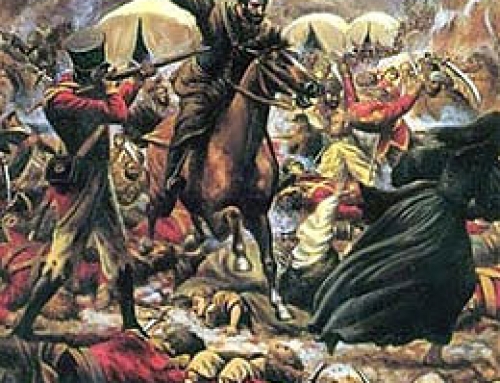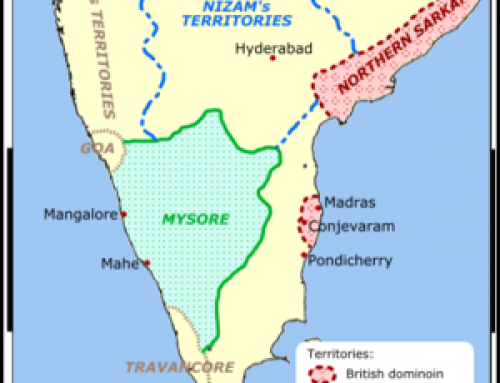During later Vedic period, the concepts related to nature of soul and cosmic principle, or the Atman and Brahman developed in form of six different schools of philosophies. these are known as ‘Shada Darshan‘. Apart from these orthodox systems which consider the Vedas as the final authority, there is another school of philosophy which developed prior to these six schools.
Note that, in total there are three Nastika Schools in Indian Philosophy – Charvaka, Jaina, and Buddhism.
Charvaka School :
- It is an Nastika system, which do not believe in the Vedas and the God.
- Charvaka system believes only in materialism.
- Brihaspati is considered as the founder of Charvaka School.
- It is mentioned in Vedas and Brihadaranyaka Upanishad.
- It is also known as Lokayata Philosophy or the philosophy of the masses.
- It considers that there no other world after death. Therefore, there is no existence other than this material world.
- Charvaka does not recognises God, soul and heaven since they cannot be perceived.
- They consider the whole universe as consisting only 4 elements: earth, water, fire and air.
Other Nastika Philosophy systems are: Jain and Buddhism, which also do not recognize the authority of Veda and presence of God.
Here, we are giving basic characteristics details of the 6 (Six) ‘Aastika’ schools of Indian Philosophy. These are:
1. Samkhya School of Indian Philosophy
- Its propounder was Kapila, who authored Samkhya Sutra.
- Samkhya System considers reality to be constituted by two principle: Purush(male) and Prakriti(female).
- Prakriti and Purusha are supposed to be completely independent and absolute.
- Purusha: is mere consciousness and cannot be changed or modified.
- Prakriti has three attributes- Thought, movement and change/transformation.
- Samkhya philosophy establishes relationship between Purusha nad Prakriti to explain creation of Universe.
- It also explains phenomenon of evolution.
2. Yoga School of Indian Philosophy
- This system was described in Yogasutra written by Patanjali around 2nd century BC.
- Yoga means the union of two principal entities.
- It works towards systematic release of Purusha from Prakriti by purifying and controlling changes in mental mechanism.
- The techniques of Yoga control mind, body and sense organs. Hence, it is considered a means to attain mukti/ freedom.
- Yoga admits existence of God as a guide and teacher.
- It says that freedom can be attained by practicing yama(self-control), niyama(observation of rules), asana(fixed postures), pranayama(breath control), pratyahara(choosin an object), dharna(fixing the mind), dhyana(concentration), Samadhi(complete dissolution of self by merging mind and object).
3. Nyaya School of Philosophy
- It is described in Nyaya Sutras authored by Gautama.
- It is a technique of logical thinking.
- It considered valid knowledge as real knowledge, that is knowledge of an object as it exists.
- Nyaya system considers God as one who creates, sustains and destroys the universe.

4. Vaisheshika School of Indian Philosophy
- The propounder of this system of philosophy was Kanada.
- A significant work on Vaisheshika is “Prashastapada“.
- It is a realistic and objective philosophy of universe.
- It considers the reality to have many bases or categories, which are attribute, action, substance, genus, distinct quality and inference.
- Vaisheshika believe that objects of universe are composed of 5 elements: earth, water, air, fire and ether.
- It considers God to be the guiding principle.
- It considers that living beings are rewarded or punished according to law of karma.
- Vaisheshika considers the creation and destruction of universe is a cyclic process and occurs according to the wishes of God.
- It explains the phenomenon of the universe by the atomic theory, where the combination of atoms and molecules into matter. It explains the mechanical process of formation of universe.
5. Mimansa School of Indian Philosophy
- Sabar Swami and Kumarila Bhatta are associated with Mimansa school.
- The main text of Mimansa is Sutra of Gaimini, written around 3rd century BC.
- It is based on analysis of interpretation, application and use of the text of the Samhita and Brahmana portions of the Veda.
- It considers the philosophy of Vedas to be eternal and processes all knowledge, and religion means fulfillment of duties prescribed by the Vedas.
- Mimansa encompasses the Nyaya-Vaisheshika system.
- It emphasizes the concept of valid knowledge.
- The essence of the system is Dharma, considered to be a dispenser of fruits of actions.
- Mimansa lays stress on ritualistic parts of Vedas.
6. Vedanta School of Indian Philosophy
- It refers to the philosophy of the Upnishad(concluding part of Vedas).
- The propounder of Vedanta is Shankaracharya, who wrote commentaries on Upnishads, BrahmaSutras and Bhagvad Gita.
- His philosophical views are known as Advaita Vedanta. Advaita means non-dualism(belief in one reality).
- Ramanuja is considered another important Advaita Scholar.
- Shankaracharya said that ultimate reality is Brahman. And there is no distinction between self and Brahman.
- Brahama is considered to be existent and unchanging highest truth and knowledge. The knowledge of Brahman is the essence of all things and ultimate existence.
- Vedanta denies the existence of apparent ego, this makes Vedanta unique in all the philosophies in World.
- Vedanta philosophy believes that different religions lead to same goal.
- Its core message is that every action has to be governed by intellect. The mistakes are made by the mind but the intellect tells that action is in our interest or not.
- Vedanta allows practitioner to access the realm of spirit through the means of intellect.
<< Read about Jainism in history of India>>
<< Click here to know about Buddhism here>>
<< Read about National Disaster Management Authority (NDMA) here>>





Name the schools of Indian Philosophy?
Guys plz tel me correct ans of this question
6 schools of philosophy
samkhya,yoga,nyaya,vaisheshika,mimasa,vedanta…..all this 6 tell us the way to attain salvation
Rachana Rathore,
with due regard and respectfully I state that I want you to share me point note on the topic ” NATIONALISM MOVEMENT IN INDIA ” I am thanking you for your works. having been preparing for competitive exams I need support and encouragement from you people. I shall be happy if necessary response are taken up in no time.
Hi! Rachna, there are basically 9 schools of Indian Philosophy, 6 asatika schools, they are the Nyaya, the Vaisesika, the the Vedanta,the the Samkhya,the yoga and the Mimamsa; and the 3 nastika school, they are the Carvaka, the Bauddhism, and the Jaina
Hello Aishwarya! You are right in stating that there are nine schools of Indian Philosophy. In this article we have specifically focused on the 6 ‘Aastika’ Schools of Indian Philosophy, with a little description about Charvaka philosophy.
I hope this helps clearing your doubt.